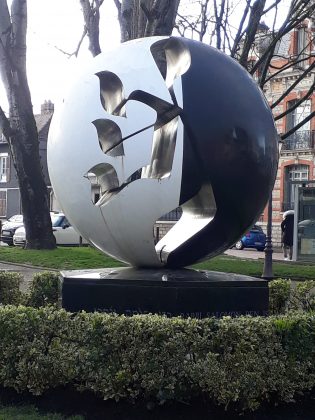
During the Middle Ages, the Aube Region in France hosts many Jewish communities including Villenauxe-la-Grande, Saint-Mards-en-Othe, Plancy-l’Abbaye, Ervy-le-Chätel, Lhuître, Mussy-sur-Seine, Ramerupt, Dampierre , Brienne-le-Chäteau, Bar-sur-Aube and especially Troyes.
The Jewish presence in the city of Troyes probably dates from the XIth century, a fact which can be verified from documented archives. Probably a few hundred people. But among whom the great scholar Rashi.
By opening the five books of the Torah, the Talmud or many other religious works, a word, rather a name accompanies the approach of these texts: Rashi. If comments from texts shared for millennia shed light on such a point, such a situation, such a character, Rashi is unanimous as a leading commentator.
By his capacity to make the link between the biblical texts and all the comments which he has selected, confronting the most relevant approaches to the most complicated questions. He facilitates its reading, by finding the literal meaning of reading, the Pshat.
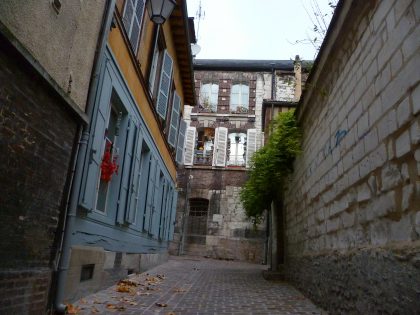
National pride, Rabbi Shlomo Itshaqi, better known by the name of Rashi, was born in the French city of Troyes in 1040. Having benefited from an excellent rabbinical training with the rabbis Jacob b. Yakar, Isaac b. Judah in Mainz and Isaac b. Eleazar Ha-Levi in Worms, he resettles in Troyes and opens his institute. Between the East of France and the West of Germany a region was prospering economically and intellectually, encouraging the exchanges on the two plans.
Rashi also represents the junction of traditional and modern excellence. A primary reference in text comments but also in its investment in the City, he also highlights the French language in its comments. Rabbi Claude Sultan, who directed the Rashi Institute, said that French linguists were studying his biblical commentaries to find French words from the Middle Ages, Rashi not in fact hesitating to use the language of Molière and the regional language of Champagne to clarify a comment when there was no equivalent in Hebrew. Christian religious texts, like those of Nicolas de Lyre, also refer to him.
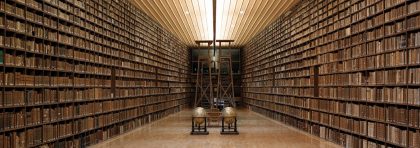
The exchanges between Jewish and Christian thinkers are moreover regular and warm. At the time of Rashi but also of his descendants.
Descendants who perpetuated his teaching by creating the school of the Tossafists. Among them are the rabbis Rashbam, Ribam and Rabenou Tam. This school shines in the region in Ramerupt, Dampierre and Sens.
Jewish life in Troyes gradually experienced economic prosperity but also persecution, both material and physical, particularly in the XIIIth century with the reign of Louis IX. The following century saw expulsions under Philippe le Bel and Charles VI and timid returns of Jews to the city.
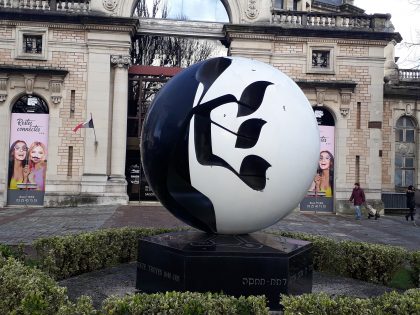
The old Jewish quarter was located near the Saint-Frobert church and the Jewish cemetery at the entrance to the suburb of Preize. The cemetery having been destroyed to enlarge the city, the tomb of Rashi has disappeared. Near the rue de Preize, an esplanade in front of the Jacques Chirac Media Library was named in memory of Rashi. The Media library possesses vast heritage funds, mainly from the XVIth and XVIIth centuries, among them the ones held at the Clairvaux Abbey library.
In the Middle Ages, the Saint Frobert district, around rue Hennequin, was nicknamed “la Juiverie” or “Brosse aux juifs”. At the time of Rashi, many Jews lived in this neighborhood.
It was only in the XIXth century that the Jewish community settled permanently in Troyes. On the eve of the Holocaust, some 200 Jews lived in Troyes. Today, a few hundred Jews live in the department of Aube.
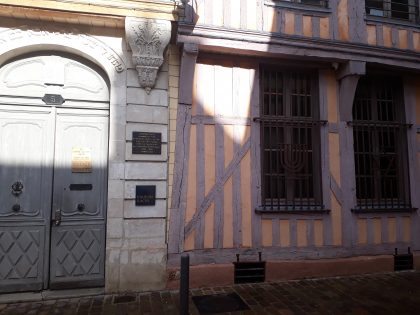
1990 marked the 950th anniversary of Rashi’s birth. Therefore, two major events during that year honored Rashi’s influence. The latter one was the presentation of the Rashi Memorial, created by the sculptor Raymond Moretti. It was inaugurated before an emotional audience. Among them, Robert Galley, the former mayor of Troyes and Elie Wiesel. The latter recalled the importance of Rashi: “His comment has become my companion. Rashi was there, guiding me, telling me that everything is simple despite appearances. I began to love him so much that I could not do without him because, from then on, I found him to be different, radiant with friendship. “
The memorial is located in front of the Champagne theater. Consisting of a metal sphere of almost 3 meters, the artist was inspired by the Cabbala and we see the acronym of Rashi in Hebrew.
Nowadays, two places centralize the cultural and religious activity. The Rashi Synagogue and the European University Institute Rashi, one opposite the other, are located in the old town of Troyes.
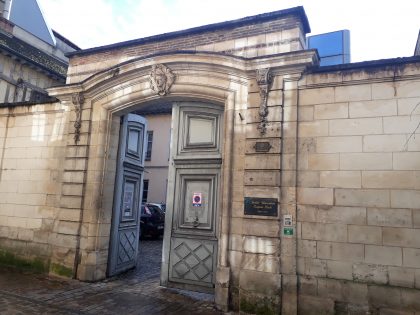
In 1960, the Rashi Synagogue was installed in the old town. Wood is much used in the architecture of building, in harmony with the antiquity of the district. Interior renovations have been carried out in recent years with the installation of a beautiful glass roof, combining eras. There is also a beautiful stained glass window inspired by Rashi’s family tree. The Rashi House, created there in 2017, offers a permanent exhibition about Rashi. The building also holds a library, movies and numerical tools presenting precious manuscripts.
In 1990, in the same spirit as the inauguration of the Memorial, and preceding it, the Rashi Institute opened its doors that year. Today, Since then, it has occupied an important place in Jewish studies but also in intercultural sharing. By studying the Hebrew language, other Semitic languages as well as compared thoughts and civilisations. And by asking the question of the cultural and scientific approach to religion. The Town Hall of Troyes, as well as the Media Library and the University of Reims actively participate in sharing Rashi’s work and influence, precisely on biblical, linguistic and cultural studies.